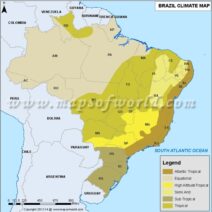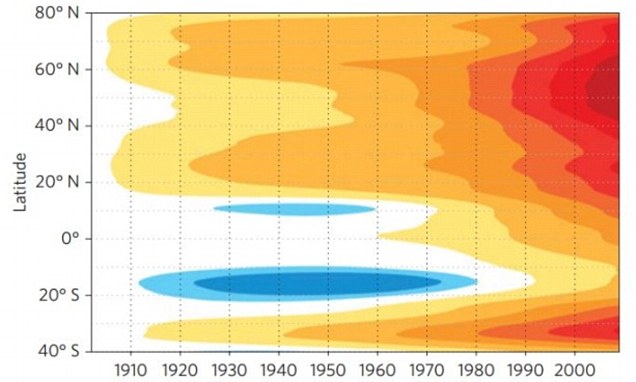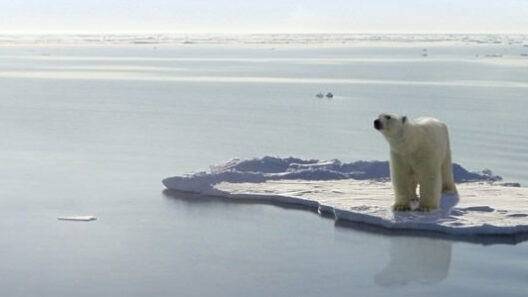As the world grapples with the irrefutable consequences of climate change, the question arises: are all regions heating equally? The simple answer is no. The phenomenon of global warming is an intricate tapestry woven from various threads of scientific inquiry. Some areas are experiencing rapid temperature increases, while others may be warming at a slower pace or even revealing atypical cooling trends. Understanding this geographical disparity is essential for both effective climate policy and local adaptation strategies.
Firstly, it’s imperative to define what we mean by global warming. This term encompasses the long-term rise in Earth’s average surface temperature due to human activities such as greenhouse gas emissions from fossil fuel consumption, deforestation, and industrial processes. However, the impacts of these activities are not uniformly distributed across the globe. A myriad of factors contributes to the unequal distribution of warming, including geographical location, ocean currents, atmospheric conditions, and local land-use changes.
One of the most pronounced examples of uneven warming is the Arctic region. The Arctic is warming at a staggering rate, with temperatures rising about twice as fast as the global average. This phenomenon, often referred to as Arctic amplification, can be attributed to several factors, including the loss of sea ice which has a reflective quality. As more ice melts, it exposes darker ocean water, which absorbs more sunlight and leads to even greater warming. This alarming trend poses significant risks not only to polar bears and indigenous communities but also to global weather patterns and sea levels, given that melting ice contributes to rising oceans.
Conversely, many regions near the equator are not experiencing such dramatic temperature increases. While they are certainly affected by global warming, the relatively stable climate conditions found in tropics can make it seem as though they are less impacted. However, this notion belies the reality that equatorial regions are facing dire consequences such as more intense and frequent rainfall, leading to flooding and soil erosion. Additionally, the agricultural practices prevalent in these nations are increasingly being jeopardized by shifts in climate, threatening food security.
Another factor influencing regional temperature differences is elevation. For instance, mountainous areas experience different warming patterns compared to lowland regions. In high-altitude locations, the impacts of climate change can manifest as accelerated glacial melt, which has repercussions for freshwater sources that millions rely on. Conversely, urban areas can experience “urban heat islands,” where localized heating makes cities warmer than their rural surroundings due to human construction and industrial activities. This emphasizes that not only geographical latitude but also local topography can play critical roles in temperature discrepancies.
Ocean currents also hold the key to understanding uneven warming. Take, for example, the Gulf Stream, which brings warmer waters from the tropics up towards the northern latitudes. Changes in this current’s flow can significantly alter temperature distributions along the eastern coast of North America and parts of Western Europe. A slowdown of the Gulf Stream due to climate change could have severe implications, affecting weather patterns, sea levels, and ecosystems not only in adjacent areas but far beyond.
Moreover, the socio-economic factors associated with specific regions further complicate the narrative around global warming. Developed nations, equipped with resources and technologies for climate mitigation and adaptation, are likely to experience less acute consequences than developing nations that may lack the infrastructure or financial means to combat climate effects. For instance, coastal cities in wealthier countries might invest in robust sea defenses against rising waters, while lesser-developed regions remain vulnerable, exacerbating social inequalities and creating new challenges for global governance on climate action.
Global climate models have been instrumental in predicting regional warming effects, yet they are often met with skepticism. The interpretation of these models is highly complex and laden with uncertainties, especially when localized data is amalgamated with global trends. Regional climate projections can vary vastly, often leading to debates within scientific circles and among policymakers. This ambiguity emphasizes the need for granular data collection and analysis on various scales to better inform communities and governments.
It is also essential to highlight the importance of public perception and education surrounding global climate change. Misconceptions can lead to a lack of urgency or misplaced optimism. For instance, while some may argue that the existence of temperature variabilities suggests normal cyclical patterns, scientific evidence overwhelmingly supports the notion that current changes exceed natural variability. Raising awareness and fostering an informed public discourse can spur community actions and influence policy decisions geared towards climate justice.
Moreover, adaptive strategies are crucial as communities work to navigate the stark realities of climate change. These strategies can range from altering agricultural practices in response to shifting climates to investing in renewable energy technologies that are less sensitive to temperature fluctuations. Regional efforts must engage local knowledge and experiences, for understanding the unique challenges each community faces will allow for tailored solutions that address specific climatic threats.
To encapsulate the complexities of global warming, it is clear that not all regions are heating equally. Each area is influenced by a unique constellation of environmental conditions, socio-economic status, and adaptive capacity. As we collectively confront this multifaceted crisis, acknowledging these disparities is vital for crafting equitable and effective climate strategies aimed at safeguarding both our planet and its inhabitants.








